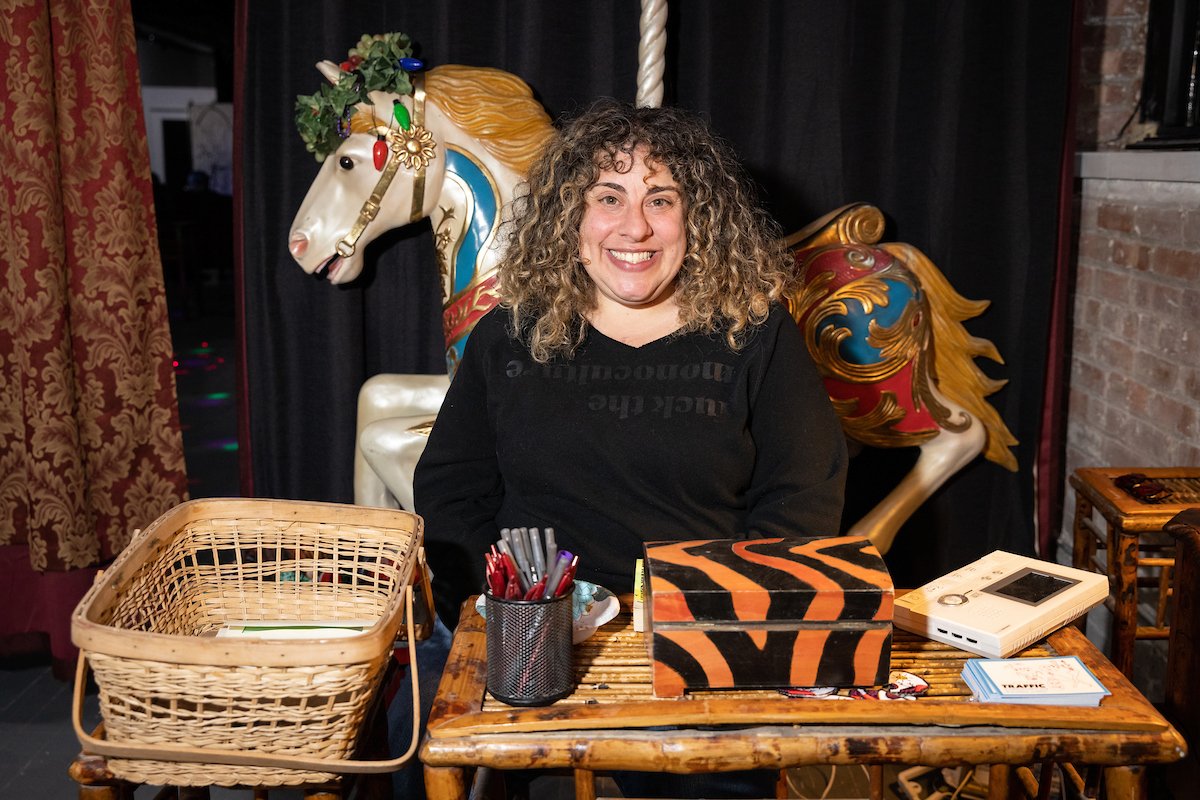After having come out on the other side of the biggest disruption to have taken place in our generation—the pandemic—we know all too well the profound impacts disruption can cause on lives and the status quo. In the publishing industry, disruption is also happening right now, and we ought to keep our eyes out for them always, thinking about them and how they can affect you down the road, as well as thoughtfully consider what, if any, opportunities exist with change.
As we saw in the pandemic, restaurant jobs were lost but delivery jobs were also created; brick-and-mortar stores suffered or shuttered but those that had or quickly mobilized online commerce survived; and, at the height of masking, industrious sewers jumping on an opportunity did brisk business selling unique, handsewn face masks on Etsy.
Plenty has been said about possibly the biggest disruptor in publishing at the moment—artificial intelligence (AI), its role in book creation, and its copyright implications. While AI is getting all the attention, other less headline-grabbing innovations are also being forged in publishing that challenge conventional wisdom and what we come to think of as “the rules” of publishing. We think you should know about some of them.
We have gathered three examples of rule-breaking to give you food for thought at IBPA Publishing University this April in Denver. The conference theme is “Rise and Disrupt,” and we couldn’t think of more suitable publishing industry disruptors to headline our Saturday keynote panel to discuss “What can we learn from the innovations happening in publishing today?” than Joe Biel of Microcosm Publishing, Dhonielle Clayton of Cake Creative & Electric Postcard, and Oriana Leckert of Kickstarter. Plus, the panel discussion will be moderated by Brooke Warner of She Writes Press, no less an innovator herself through her work defining hybrid publishing and giving structure to a viable alternative publishing model.
You Don’t Need Amazon
 For any publisher still hanging on to the notion that one’s books need to be distributed in national bookstores or be an Amazon bestseller in order to achieve sales success, take note of Microcosm Publishing, which proudly does none of the above. And yet, Microcosm is one of today’s fastest growing publishers, named by Publishers Weekly as the number one “Fast Growing Publisher” in 2022, and, again, number three on Publishers Weekly’s list in 2023. In fact, publisher and founder Joe Biel is well known for his anti-Amazon, pro-indie stance. So, how did he build Microcosm into one of the most fascinating yet successful indie publishers today who has sold millions of books? In advance of his taking the stage at IBPA Publishing University to answer this million-dollar question, we connected with Biel to give us some idea. First, he challenges the notion that it’s the Big Five publishers and national chain retailers that hold all the power.
For any publisher still hanging on to the notion that one’s books need to be distributed in national bookstores or be an Amazon bestseller in order to achieve sales success, take note of Microcosm Publishing, which proudly does none of the above. And yet, Microcosm is one of today’s fastest growing publishers, named by Publishers Weekly as the number one “Fast Growing Publisher” in 2022, and, again, number three on Publishers Weekly’s list in 2023. In fact, publisher and founder Joe Biel is well known for his anti-Amazon, pro-indie stance. So, how did he build Microcosm into one of the most fascinating yet successful indie publishers today who has sold millions of books? In advance of his taking the stage at IBPA Publishing University to answer this million-dollar question, we connected with Biel to give us some idea. First, he challenges the notion that it’s the Big Five publishers and national chain retailers that hold all the power.
“It’s the independent publishers and stores that are growing the market. We saw this again in the DOJ vs. Penguin Random House trial, when it was revealed that the only way that Simon & Schuster or Penguin Random House could grow their market share was through the distribution of independent presses,” Biel says. Meanwhile, “independent publishers comprised 54% of the market and have continued to grow.”
The same goes for independent bookstores, he says. “During a conference panel in 2004, a publisher disparagingly told me that we were foolish for not putting barcodes on our books and selling into Barnes & Noble. A young woman in the audience cried and begged me not to do this afterwards. Twenty years later, we sell more to three independent stores that we have strong relationships with than the entirety of Barnes & Noble. Why focus on 10 fickle accounts when we could focus on 14,000 cool stores that know we have their backs?” he says.
The key to Microcosm’s success was building its own distribution network. In 2018, the company set a new mandate: “We would focus on independent retailers, stop supplying Amazon entirely, and put little to no effort into the 10 biggest accounts,” Biel says. “We grew 156% in 2019 doing it ourselves through focusing on small stores. We add 150+ new stores each month, thousands per year. We dig deep to find new places to sell books and, as such, reach people that don’t think of themselves as readers or feel welcome in bookstores.”
Coming Up with the Big Idea
 Meanwhile, in the world of book packaging, Dhonielle Clayton, the prolific mind behind Cake Creative and Electric Postcard, is bringing change to the world of packaging and meeting with success through her approach. Her business has sold 57 books in the last decade, with her packaging company retaining the rights.
Meanwhile, in the world of book packaging, Dhonielle Clayton, the prolific mind behind Cake Creative and Electric Postcard, is bringing change to the world of packaging and meeting with success through her approach. Her business has sold 57 books in the last decade, with her packaging company retaining the rights.
Packagers come up with a book’s concept, hire a writer to write it, and then sell the book to publishers. Because the packager owns the copyright, a savvy packager who understands what the market needs and has the imagination to match can build a lucrative portfolio of rights. For example, nine of Clayton’s projects have been optioned for TV and film. “Gossip Girl” and “Pretty Little Liars” are some other examples of packaged stories (although not Clayton’s) that have met with screen success.
Writers hired by packagers typically receive a percentage or a negotiated fee but write under a pseudonym or are interchangeable with other writers whom the company works with. However, for Clayton, it’s important to her that her writers receive a percentage of the advance or royalties and any subsidiary rights. They also encourage their writers to use the opportunity as a springboard for their own careers.
For Clayton, the books she ideates and champions are based on what she wants to see on shelves, and what she feels the market needs to have: books that showcase diverse authors, characters, and cultures. Some of her ideas that have been turned into books include The Gauntlet, a series about a Bangladeshi Muslim girl who gets trapped in a magic board game, and Love Sugar Magic, a fantasy series about a family of Mexican American witches. In the Tristan Strong series, Clayton envisioned a fantasy world with a Black superhero. Disney picked it up and turned it into a trilogy and eventually also offered her writer, Kwame Mbalia, his own imprint, Freedom Fire Books.
Crowdfunding Enables Other Publishing Projects
 Kickstarter has long been established in the publishing world as a platform for authors and publishers to crowdsource the funds to launch their book projects.
Kickstarter has long been established in the publishing world as a platform for authors and publishers to crowdsource the funds to launch their book projects.
However, the headlines around Kickstarter these days aren’t about newbie authors getting their first books published anymore. Instead, they’re about established authors and publishers who’ve landed thousands of backers and sometimes even millions of dollars to fund unique projects—projects that wouldn’t have been possible if tried to be funded the traditional way.
Before IBPA Publishing University, we invited Oriana Leckert, Kickstarter’s director of publishing, to give readers some ideas on how crowdfunding can open up all sorts of new possibilities and revenue for publishers today. The most successful Kickstarter publishing campaign to date took place just last year. Brandon Sanderson’s “A Year of Sanderson” campaign was designed to send backers a box a month for the entirety of 2023.
His Kickstarter project raised $41 million from 185,000 backers paying to receive four secret books, with the remaining eight shipments containing swag themed around his different characters and universes, including treasures like custom wax seals, intricate ramen bowls, reversible plushies, and more.
On why an established author like Sanderson with a large following would launch his four books via Kickstarter instead of the traditional way, Leckert says a crowdfunding campaign can achieve different outcomes. “Kickstarter fosters a strong connection between authors and their readers that is not really available through traditional publishing. You’re including them in the creation of your work, helping them see how critical their help is to bringing your books to life, and rewarding them for their fandom with unique items and thrilling access.”
She adds that Sanderson’s project was not acting against his publisher. “It was worked out before he launched that all the books would be published by Tor in paperback versions some months after all the Kickstarter rewards were fulfilled.”
Many other established publishers have also taken to Kickstarter. According to Leckert, the advantages for indie presses to fund using Kickstarter include receiving the cash in hand before you begin publishing versus sinking in your money up front and then hoping to recoup it later.
It also helps publishers gauge interest and set appropriate print runs. “This can be especially helpful for young presses still finding their financial footing, as well as established publishers looking to try something ambitious or in a new area of the literary landscape,” she says. Publishers are utilizing Kickstarter to take their books to the next level or to realize passion projects, something that would not be possible if going about it in the traditional way. One of Leckert’s favorite examples is Rough Trade’s paean to The Shining. “Their immersive edition consists of 400 typewritten pages in a beautiful box, which is patterned internally to match the carpets in the Overlook Hotel, including essays, interviews, posters, key fobs, and other ephemera. It’s a wildly ambitious and expensive project, so it was
tremendously beneficial for Rough Trade to be able to get their funding in hand and long before they went to press,” she says.
Venerable nonprofit the Feminist Press used Kickstarter to cover production costs as well as putting together a live event in celebration of their anthology It Came from the Closet, in which queer authors reflect on horror films. They ran the project in August so they could have their launch party when the book was released in October.
We hope that these three speakers at IBPA Publishing University have given you some good food for thought for your publishing business. By finding opportunities in disruption, or being a disruptor yourself, you can position your business for success. There will be many more thought-provoking sessions presenting ideas and trends at IBPA Publishing University this April 25-27. We hope you’ll join us. You can find out more at publishinguniversity.org.
Adeline Lui is IBPA’s director of marketing and communications. She has worked in nonprofits for the last 17 years and, before that, in restaurant marketing. She enjoys connecting members with the association’s education, events, programs, and resources that help members succeed.